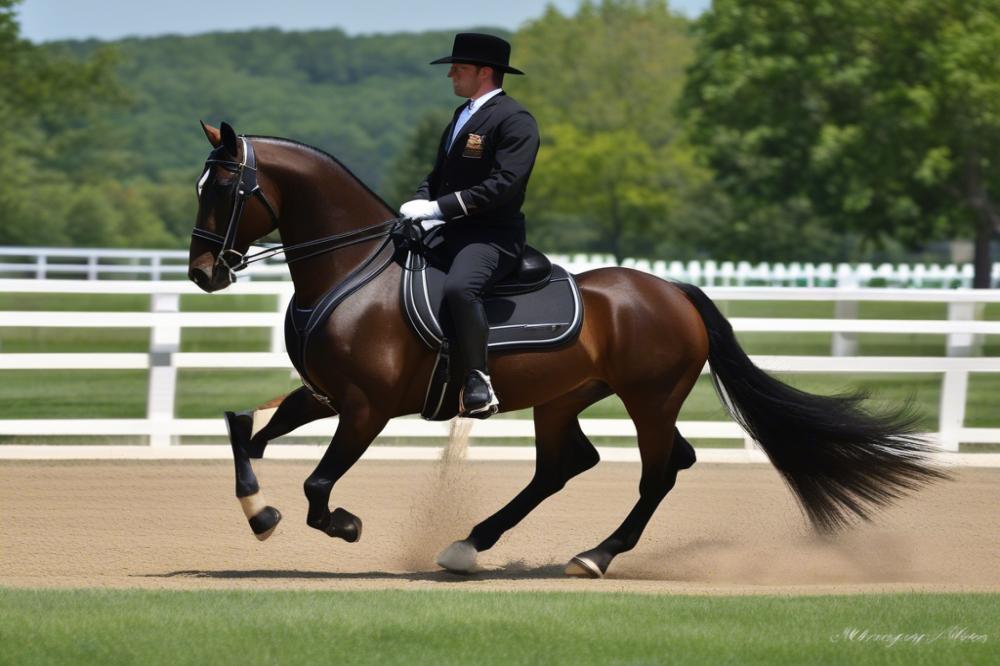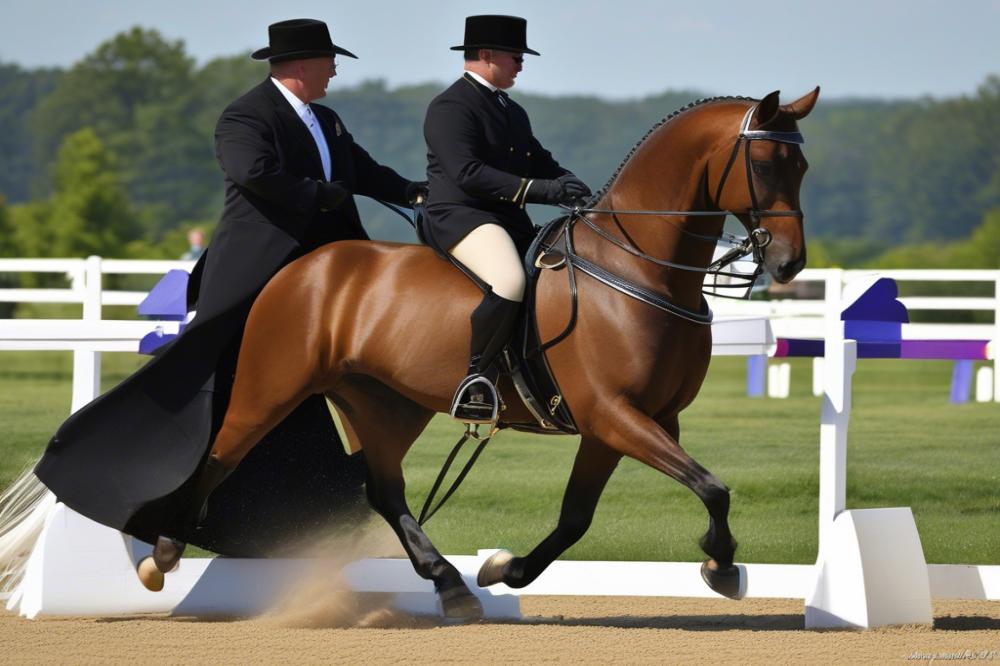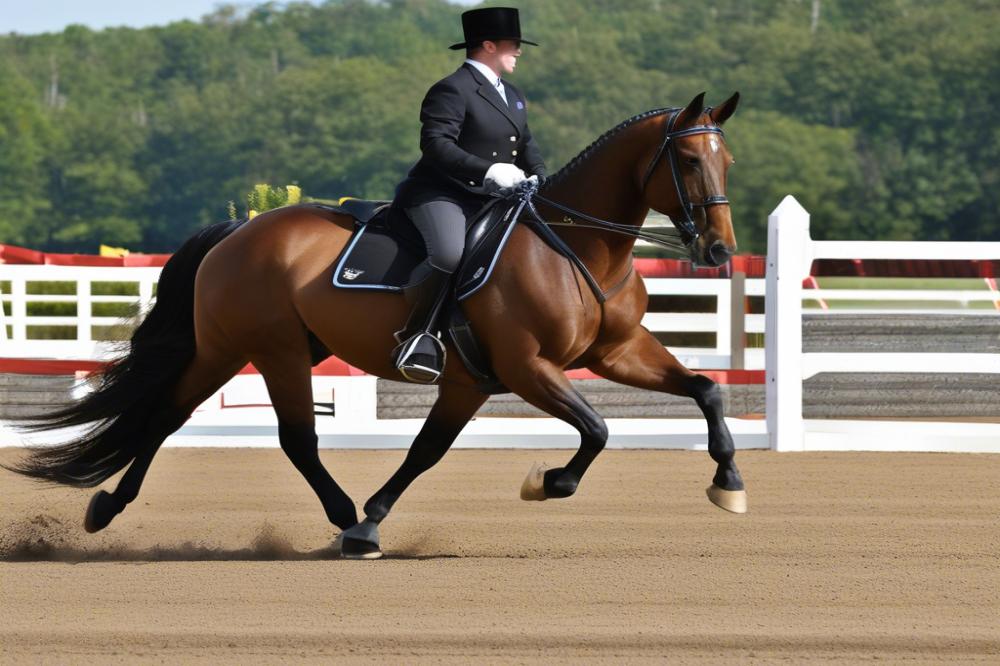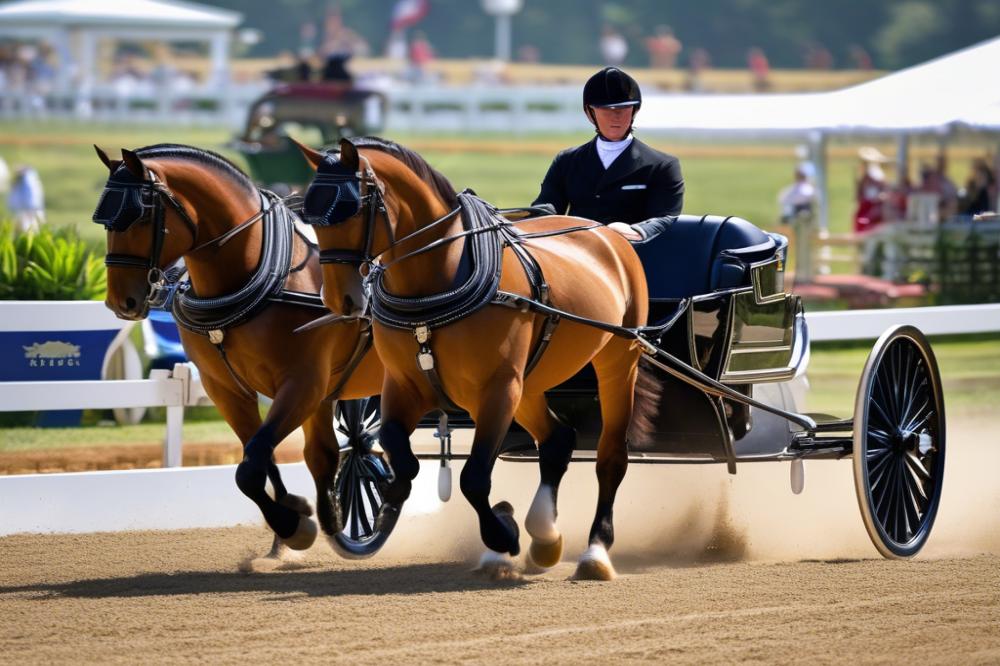Introduction
The Morgan horse holds a special place in the world of equestrian athletics. Known for its versatility and intelligence, this breed excels in various disciplines, including driving. For those interested in Morgan Horse Driving, it is essential to grasp the nuances of the sport, especially if you aim to compete in driving events.
Proper techniques can make a significant difference in performance. Every detail counts when you are navigating through courses or timed events. Riders must develop a strong connection with their horse to harness its full potential. This connection helps build trust, which is crucial in competitive settings.
Competitive Driving Events present unique challenges and rewards. They test both horse and driver in ways that require skill, patience, and practice. Understanding the rules and formats used in these events can enhance your chances of success. Preparation is not just physical; mental readiness is equally important.
As you embark on this journey, remember that consistent practice and dedication can lead to improvement. Every ride is an opportunity to learn something new, whether it’s enhancing communication or refining technique. Ultimately, the goal is to enjoy the experience while striving for excellence.
Understanding Morgan Breed Characteristics

History and Traits of the Morgan Breed
The Morgan horse has a storied history in the United States. This breed originated in the early 19th century, primarily from a horse named Figure. These horses were bred for versatility, strength, and stamina. Morgans became popular for their role in both riding and driving. Over the years, their athletic nature and charming appearance have captured the hearts of many.
Physical traits stand out. Morgans are typically medium-sized, ranging from 14.1 to 15.2 hands tall. They have a short back, a powerful build, and a refined head. Their coat colors vary widely, including bay, black, and chestnut. A Morgan’s flowing mane often adds to its overall beauty. This breed is known for its strong bone structure and good health.
Strengths and Abilities in Driving Events
Morgans excel in driving competitions. Their powerful hindquarters contribute significantly to their pushing ability. They can maintain a steady pace over various terrains, making them reliable in many driving settings. This breed shows remarkable agility, which is crucial during driving events.
Morgans tend to have a natural talent for learning driving patterns. Their intelligence allows them to quickly grasp new skills. This adaptability is a strong asset in competitive environments. Their stamina means they can sustain performance over longer durations without fatigue. Enthusiasts often appreciate their willingness to work hard.
Temperament and Training Requirements
The temperament of Morgans is another important aspect. Generally, they are known for being friendly and eager to please. This breed typically develops strong bonds with their handlers. These qualities enhance the training experience, as they are usually cooperative and responsive.
Training a Morgan requires patience and consistency. Early groundwork is essential to build trust and understanding. Regular lessons focus on specific skills needed for driving. Many owners emphasize positive reinforcement to boost their horse’s confidence. Fair discipline is also important to encourage good behavior.
Socialization plays a key role in their development as well. Exposing Morgans to different environments helps them become more comfortable in public settings, like competitions. In conclusion, understanding these characteristics and their training needs can lead to a successful experience in driving events.
Essential driving techniques

Driving a Morgan horse in competitions requires skill and focus. Both basic and advanced techniques play a crucial role in achieving success. Understanding how to use your reins effectively can make a significant difference. Equally important is the proper handling of the whip, which aids communication between horse and driver.
Basic and Advanced driving techniques
Start with the basics of steering and speed control. Use gentle movements to guide your horse in the desired direction. For turning, your body position will also influence the horse’s response. Advanced techniques may involve using weight shifts to encourage speed changes or complex maneuvers. Practicing these maneuvers can enhance your overall performance.
Reins and Whip Handling
The reins are essential for direct communication. Hold them with a relaxed grip so that there is a clear connection to the horse. Pulling too hard can cause confusion. The whip serves as a visual and auditory cue. When used correctly, it encourages the horse without causing fear. Always maintain a balance in your movements.
Efficient Use of Aids in Communication
Body language is just as important as the reins or whip. Leaning slightly can indicate direction, while subtle shifts may signal speed adjustments. Using vocal commands consistently also builds a strong bond with your horse. Though they are often described as cooperative creatures, Morgan horses respond well to clear and consistent messages. Effective communication helps both horse and driver perform at their peak.
Horse Training for Competitive Driving

Foundation Training for Morgan Horses
Foundation training is the starting point for Morgan horses involved in driving. Establish basic groundwork before moving on to more advanced techniques. Teaching your horse to respond to commands is essential. Horses need to be comfortable wearing harnesses and pulling loads. Spend time desensitizing them to different sounds and objects. This helps build confidence and trust, which are vital in competition settings.
Building a Strong Partnership with Your Horse
Developing a strong bond creates a more effective team. Spending quality time with your horse outside of training is important. Grooming sessions can enhance your relationship. Try to understand their body language and reactions. Communication is key; use consistent cues during training. Rewards are significant too. When they succeed, offer praise or treats. The connection you build will translate to better performance in events.
Specific Training Exercises for Driving
Certain exercises target skills needed for driving. Start with driving in a straight line; this helps establish control. Gradually introduce turns to improve maneuverability. Set up cone courses as a fun way to practice precision. Slow work will lay the groundwork for more difficult challenges. Incorporate transitions into your routine to enhance responsiveness. Remember to continually assess your horse’s progress.
Diversity in Training for Various Competitions
Each driving event has its own requirements. Different competitions may demand unique skill sets. Mix up your training to prepare for these variations. Include distance work to build endurance. Practice timed courses to develop speed management. Simulating competition settings will help your horse acclimate to the environment. Remain attentive to their endurance and focus throughout training. Customized approaches yield the best results for different event types.
Harnessing and Driving Gear
Overview of Essential Harnessing Equipment
When participating in driving events, having the proper harnessing equipment is crucial. A well-fitted harness allows the horse to move freely while providing the driver with control. Key components include the collar, traces, and breeching. The collar sits around the horse’s neck, helping distribute the weight of the cart. Traces connect the cart to the horse, allowing for effective pulling. Breeching provides support during downhill movements, preventing the cart from pushing too hard against the horse.
Various materials are available for harness gear. Leather is traditional and durable, while synthetic options are often lighter and easier to maintain. Each choice has its benefits; thus, selecting based on personal preference and usage frequency is essential. Always remember that the comfort of your horse is paramount. Soft padding can enhance overall comfort and minimize chafing.
Choosing the Right Cart for Morgan Horses
Cart selection depends heavily on the size and build of your Morgan horse. Many carts are available, so understanding the specifics of your horse is vital. A lightweight cart may be suitable for shorter distances or speed events. Opting for a sturdier model is advisable if you plan to drive over rough terrain.
In addition to weight, consider the width of the cart. A cart that is too wide or too narrow can affect the horse’s movement. Both comfort and handling should be priorities. Ensure that the shafts align properly with the horse’s shoulders.
Fitting and Safety Checks for Harnessing Gear
Fitting the harness correctly is of utmost importance. Begin by placing the collar to ensure it sits snugly against the horse’s neck. Once the collar is secure, attach the traces and breeching. Verify that there is enough space for your horse to move without restrictions. A good rule of thumb is to allow a couple of fingers’ width between the harness and the horse’s body.
Safety checks are equally crucial before you start any competitive event. After harnessing, inspect all buckles and straps for wear or damage. Look for signs of fraying or cracking. Test the fit by gently pulling on the harness to see if everything stays securely in place. Pay attention to the cart’s wheels and frame. Make sure everything is in proper working order before taking to the field.
Showmanship and Event Preparation
Preparing for Competitive Events
Before a competitive event, planning is very important. A detailed timeline helps keep everything organized. Begin preparations well in advance of the event date. Create a checklist of items to pack. This should include harnesses, extra gear, and water for both you and your horse. Remember, last-minute rushes can lead to forgetfulness. Taking the time to prepare can make a big difference on the day of the competition.
Grooming, Presentation, and Turnout
Grooming a Morgan horse is essential before any event. Pay careful attention to every detail of their coat. A shiny coat suggests good health and cleanliness. Use a curry comb, followed by a stiff brush, and then a soft brush for finishing. Ensure that the mane and tail are neat and well-kept. Braiding may be required for certain events. Presentation also extends beyond the horse. Dress well and choose appropriate attire that reflects professionalism. This may include a driving apron and gloves. First impressions play a significant role in judging.
Understanding Competition Rules and Requirements
Familiarity with competition rules is crucial for success. Each event has specific guidelines that participants must follow. Take time to read through rulebooks thoroughly. Know the penalties for any violations, as they can significantly affect your score. Some events may require certain types of harness or vehicle. Clarification on these matters can usually be obtained from event organizers. Always arrive at the venue with ample time for check-in and inspections. Be punctual, and it shows respect for the event and its participants. This preparation prepares you to compete confidently.
Competition Tips for Success
Strategies for Effective Navigation in Events
Understanding the course layout is critical. Study the map or diagram provided before the event. Familiarize yourself with turns, obstacles, and checkpoints. Walk the course if allowed. This will help visualize potential challenges. Remember to scout for good passing spots between sections. Watching other participants can provide insights into the best lines.
Adjusting your speed during the event plays a significant role. Know when to accelerate and when to slow down. Use your reins effectively to guide the horse. Positioning is key; aim to keep your Morgan well-centered in the path. Anticipate how your horse will respond to stimuli, such as noise or other competitors.
Keep communication clear, both with your horse and your crew. Effective signals can mean the difference between a smooth ride and confusion. Use cues consistently to reduce misunderstandings. Build a rhythm with your horse that feels natural. That connection often translates into better performance.
Building Confidence and Composure
Calmness contributes greatly to success. Being relaxed will instill confidence in your horse. Take deep breaths before the event. Visualize your performance and the outcome you desire. Having a positive mindset influences not just you but your horse as well.
Practice in different environments to prepare for distractions. Attend local events to acclimate to the competition atmosphere. This will help ease nerves during actual competitions. A familiar routine before the event can also enhance composure. Perform warm-up exercises to settle both you and your horse.
Seeking feedback from experienced trainers is beneficial. They can offer constructive criticism and boost your confidence. Don’t hesitate to ask questions. It’s essential to learn from those who have walked this path before you.
Post-event Reflections and Improvements
Analyzing your performance is crucial after the event ends. Record as many details as you can recall while they are fresh in your mind. What went well? Where could you have improved? This self-reflection can deepen your understanding of driving.
Discussing your experience with peers can be enlightening. Sharing thoughts might highlight aspects you hadn’t considered. This exchange of ideas often leads to new strategies for future events. Consider journaling your reflections as a way to track your progress over time.
Preparing for the next competition should begin soon after the last. Identify specific areas for growth, whether that be skills or knowledge. Setting goals will help focus your training. Participation in workshops or clinics can also enhance your aptitude. Learning never truly ends in the world of competitive driving.
Final Thoughts on Morgan Horse Driving
In summary, mastering the art of driving a Morgan horse in competitive events requires dedication and skill. Important aspects include understanding the horse’s unique temperament and developing effective driving techniques. Preparation is essential, covering everything from proper equipment to your own readiness. Observing seasoned competitors can provide valuable insights and inspiration as you embrace this exciting journey.
For those new to this sport, don’t be discouraged by initial challenges. Every expert was once a beginner, and progress comes with practice and patience. Building a bond with your horse is just as vital as improving techniques. Take time to enjoy the learning process, and remember that perseverance is key.
Ultimately, the joy of driving a Morgan horse is unparalleled. The sense of connection you share with your horse is rewarding. Competitions can be thrilling and provide opportunities to meet fellow enthusiasts. With the right mindset and training, you will find immense satisfaction in the world of driving.



